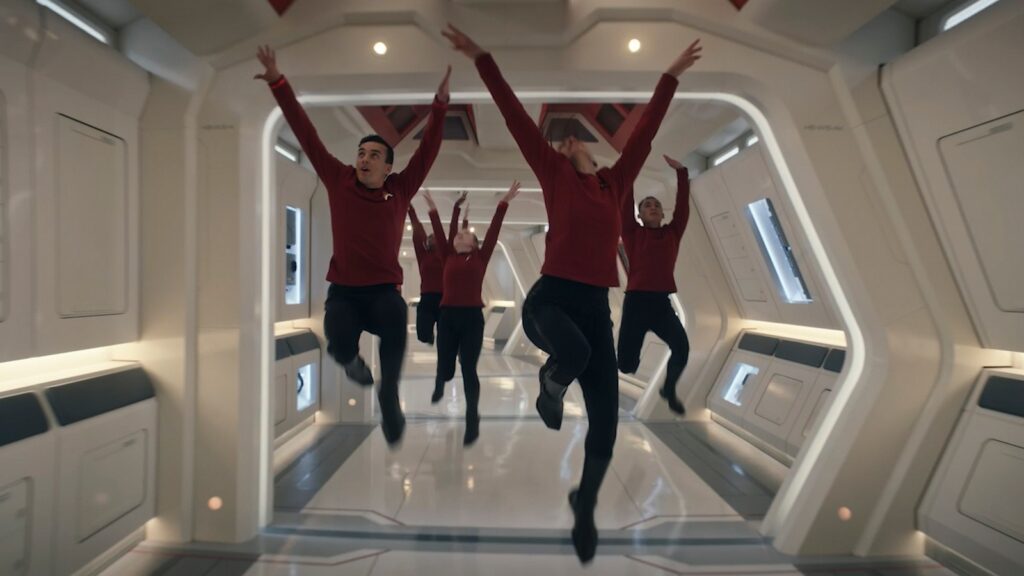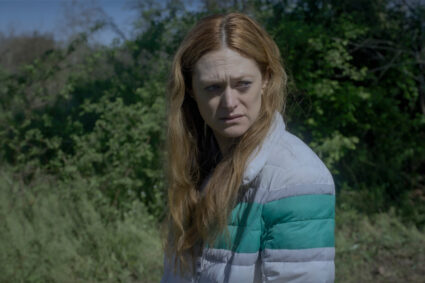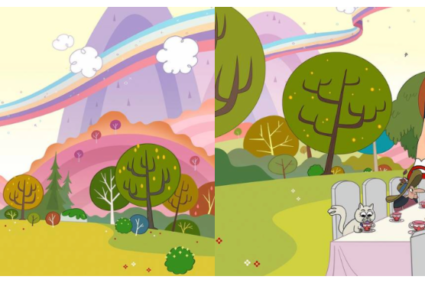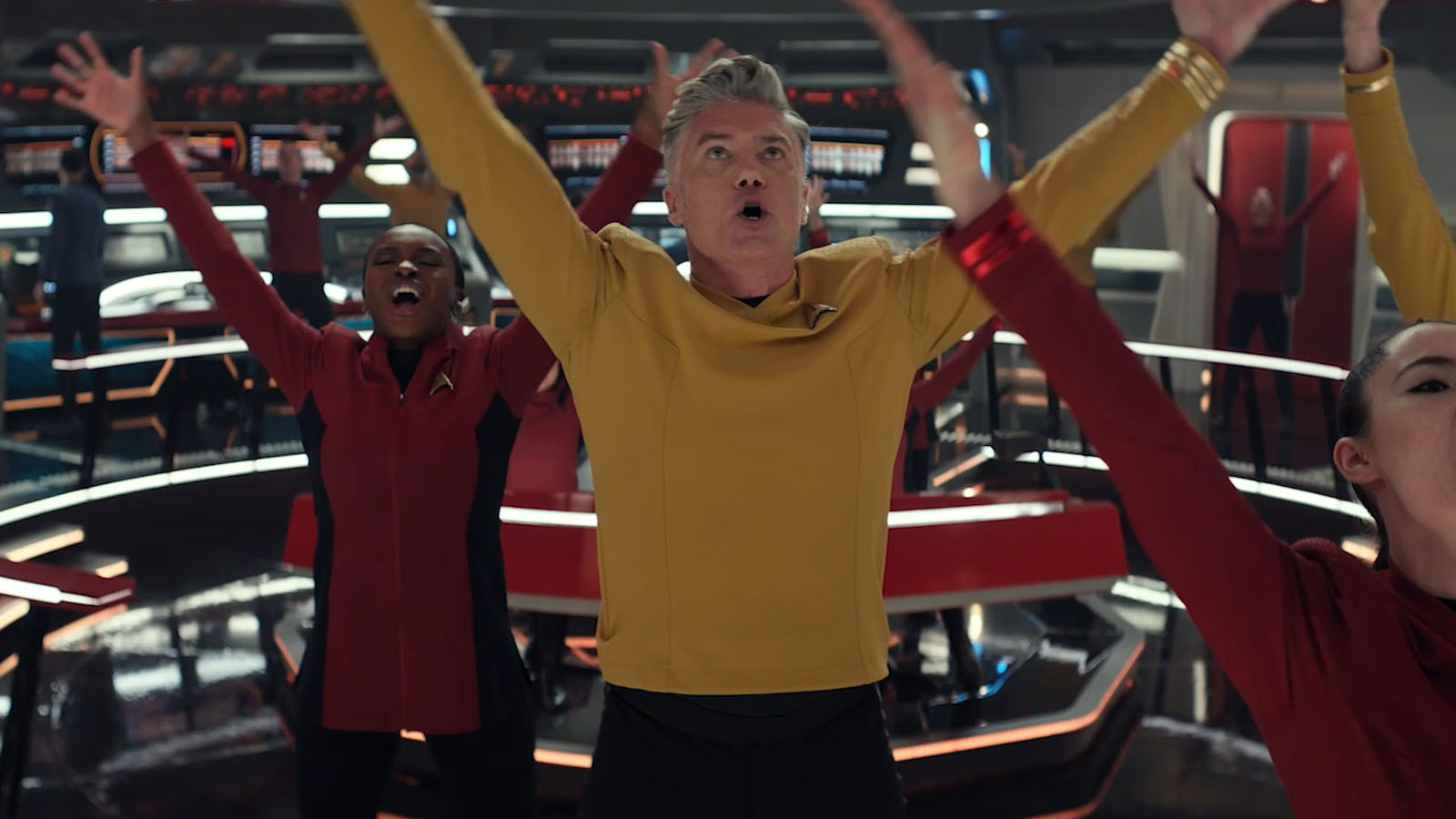
The second most teased, yet possibly most polarizing episode of Strange New Worlds has dropped and it is more “High School Musical” than Star Trek, and definitely is a “Strange New World” for the franchise. The musical episode format has been around for a long time, with a certain episode of “Xena: Warrior Princess” possibly being the first non-comedy to attempt it seriously, but cemented in pop culture by “Buffy the Vampire Slayer”. Other shows have done the musical episode format such as “Supernatural” and teen shows like “Riverdale”. However, this format really doesn’t do justice to what until now has been solid show and a solid second season.
Music as a form of communication, medicine, or filling other important roles has been a feature in a few episodes of Strange New Worlds, and even has shown up as a plot device in the Next Generation (The Survivors, Inner Light) and Voyager (Counterpoint, Virtuoso), and Deep Space Nine (It’s Only a Paper Moon, any episode featuring Vic Fontaine). So the precedent is there. However, this episode featuring the crew sending the hit “Anything Goes” (kind of an interesting choice…since in Star Trek anything really does go) into a spatial rift which causes them to start bursting into song strikes a bit of a sour note. At the suggestion of Pelia, they switch to sending music through as more universal form of communication, as the purpose of testing the rift is to see if they can create a faster communications network. At this point it should be noted that Pelia’s reasoning of using music for its harmonics as a more universal type of communication does hold water, as music being the fundamental underlying language upon which the universe is built has been theorized and discussed as far back as Pythagoras who first put the idea forward. Recently as well it should be noted that the frequency of the earth itself produces an F# – albeit one so low its imperceptible to human ears.
First, we find out they are now in or attached to an “improbability field” of sorts, where Spock asserts that no, he doesn’t think they “will turn into bunnies”. Fans of Douglas Adams’ “Hitchhikers’ Guide to the Galaxy” will recall the effective, somewhat humorous use of an “improbability drive” and the entertaining results, yet this improbability space only induces spontaneous song and dance numbers? Strange New Worlds has infused a fair bit of comedy and come tongue in cheek lines, but the overall effect for this episode feels forced. Seems misnamed. Second, we discover that the emotions of the crew are a liability due to this space following the rules of musicals where characters sing most often when they are in heightened emotional states.
One cannot fault the cast who perform admirably. Each of the crew have wonderful voices and definite singing talent, most notably Christina Chong (La’an) and Celia Rose Gooding (Uhura) – the latter doing justice to a character that had already been established in the Original Series as being a wonderful singer by the late Nichelle Nichols. Some of the songs have well written lyrics and solid musical composition, and a few numbers feature well rendered harmonies, but most are nothing more fantastic than one would hear at the average karaoke night. Even if such spatial anomalies existed that could render the crew helpless to avoid singing, the dancing is not explained, and really has an after school special or “High School Musical” level of choreography, nothing spectacular, and certainly nothing to write home about.
The first number however does not do justice to the show or genre. The status reports have sloppy rhyme, are not very singable to the average fan, and have several awkward lyrics. The follow-up of the opening credits however is excellently well done with the addition of extra instrumentation and the vocal/choral harmonies blend seamlessly, and adds a fantastic touch the episode. The second number opens with tacky lyrics that comes across as slightly childish, and some of the lyrics again don’t mesh well, although the random dancing is well executed. The emotional follow-up of La’an who witnesses the duet of Lt. James T. Kirk (Paul Wesley) and Number One shows clear jealousy which fits, and does showcase the voice of the actress admirably, although the repeated lyrics of “letting go of the wheel and flying blind” are more of a mixed metaphor – is she driving her life or piloting it? However, the song has all the qualities of a good musical number – singable, memorable, and plenty of passion and emotion.
Moving on to the spatial anomaly spreading to other ships, we see a highly personal interaction between Captains Pike (Anson Mount) and Batel (Melanie Scrofano) that a crew would have shut down rather allowed to go on to preserve the dignity of their Captains and their personal lives.
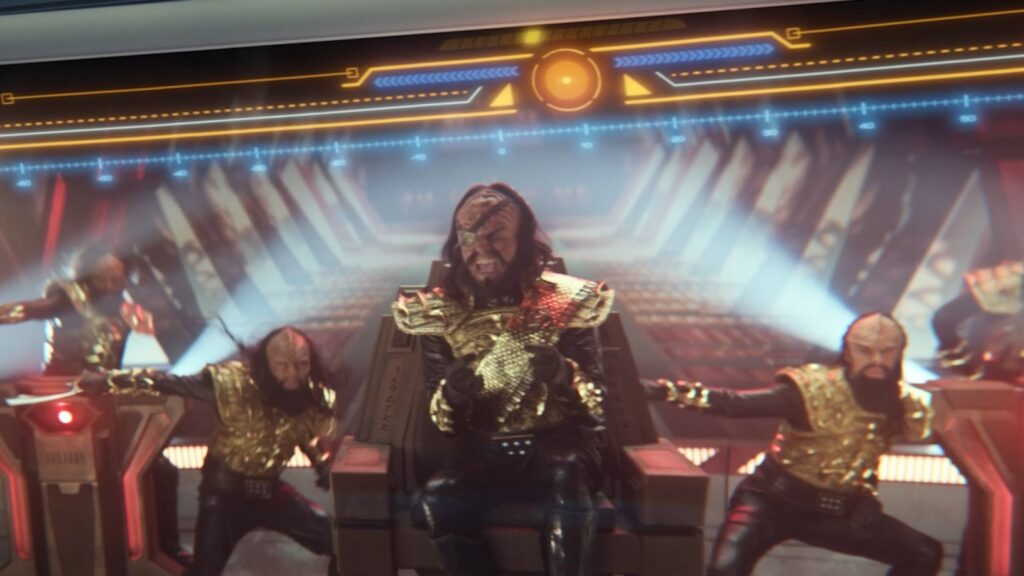
Eventually the solution to this episode is that all the ships need a “show stopping” number, led by Uhura. Unfortunately, this means bringing in the Klingons. While we have seen examples of Klingon opera and drinking songs, the Klingons here perform like a K-Pop boy band with dance moves that Klingons would definitely not engage in and do not make any sense. We do have the pleasant surprise of Bruce Horak as one of the Klingons, but otherwise the scene is a level of ridiculousness that is over the top, they even refer to it as a source of dishonour.
The final number while taking a large amount of effort, rehearsal, and coordination is still another aspect that falls flat when combined with a dance number that is supplying and endless source of Internet memes. Still the Enterprise saves the day.
In short, the episode’s musical aspect overshadows the major plot points – Chapel’s successful entry into a fellowship that will take her from the Enterprise and Spock, the romantic tension between La’an and James Kirk, the continuing difficulty between the Kirk brothers, the “will they won’t they” romance of Pike and Batel, Kirk’s learning from Number One about taking on command, La’an’s confession of what happened in the time travel episode, and many other character arcs. While the episode does a good job of following the rules of musical theatre, musical theatre tends to include song numbers that are easily accessible or singable, which most of these are not. The lyrical structure also tends to be very tight, whereas here we have a lot of forced or badly slanted rhymes.
There is also a logical fallacy in the first song having only one frequency as each note in a composition has a difference frequency and those combine to create harmony. In the end, this would have fit better in Prodigy or Lower Decks, a less serious Trek medium, but the cast does their best sort of like the cast of the Star Wars prequels making the best of awkward, forced writing. For entertainment purposes this episode strikes a chord, but for Star Trek and the genre of musicals, it feels somewhat out of tune.
Final Grade B-
